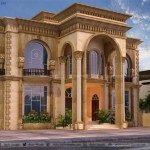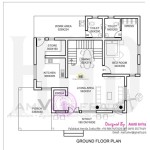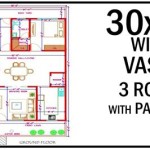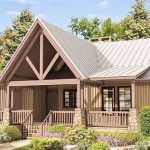Early 1900s House Plans: A Glimpse into Architectural History
The early 1900s represent a fascinating period in American architectural history. This era saw a transition from Victorian extravagance to more simplified styles, reflecting changing societal values and advancements in building technology. Exploring house plans from this time provides valuable insight into the lifestyles and aspirations of people living during this transformative period.
Several distinct architectural styles gained prominence during the early 1900s. The popular styles included Queen Anne, which, though originating in the late 1800s, continued its influence into the early 20th century, along with emerging styles like Arts & Crafts, Craftsman, American Foursquare, and Colonial Revival. Each style presented unique characteristics and features that distinguished them from one another.
The Queen Anne style, known for its ornate details, turrets, and asymmetrical facades, gradually gave way to the more streamlined and functional designs of the Arts & Crafts and Craftsman movements. These styles emphasized handcrafted details, natural materials, and a connection to nature, often featuring built-in cabinetry, exposed beams, and large fireplaces. The emphasis shifted from elaborate ornamentation to the inherent beauty of materials and craftsmanship.
The American Foursquare, a popular choice for its practicality and affordability, became prevalent. Characterized by its boxy shape, hipped roof, and symmetrical facade, the Foursquare maximized space utilization and offered simple yet appealing aesthetics. This style reflected the growing middle class and the need for efficient and economical housing.
Simultaneously, the Colonial Revival style gained traction, harkening back to the classical architecture of early American settlements. This style incorporated elements from Georgian, Federal, and Dutch Colonial architecture, often featuring symmetrical facades, columns, and multi-paned windows. The Colonial Revival represented a nostalgic return to traditional values and a sense of historical continuity.
Examining early 1900s house plans reveals significant differences in layout and functionality compared to modern homes. Rooms were often more formally defined and separated, with distinct spaces for dining, parlor, and living activities. Kitchens, while evolving, were typically smaller and less integrated into the overall living space than they are in contemporary designs. Floor plans commonly included a front porch or veranda, serving as an important social space for interacting with neighbors and enjoying the outdoors.
Technological advancements also played a role in shaping the design of these homes. The increasing availability of electricity, indoor plumbing, and central heating influenced the placement and functionality of rooms. Bathrooms, while not always standard, became more common, and kitchens began to incorporate modern appliances. These advancements significantly impacted daily life and improved living standards within the home.
The size of early 1900s homes varied considerably depending on location, socioeconomic status, and architectural style. Grand Queen Anne mansions offered spacious accommodations for affluent families, while more modest Foursquare and Craftsman homes catered to the growing middle class. Urban residences tended to be smaller and more compact due to limited space, while rural homes often featured larger footprints and expansive yards.
Studying early 1900s house plans offers a window into the social and cultural context of the era. The shift away from Victorian opulence towards simpler, more functional designs reflected changing societal values and the rise of a new middle class. The emphasis on craftsmanship and natural materials in the Arts & Crafts movement represented a growing appreciation for handcrafted goods and a connection to the natural world.
The architectural details found in these plans, such as intricate woodwork, stained glass windows, and decorative fireplaces, provided homeowners with a sense of pride and individuality. These details often served as expressions of personal taste and social standing. The careful consideration given to the design and aesthetics of these homes demonstrates the importance placed on creating comfortable and visually appealing living spaces.
The availability of original blueprints and architectural drawings from this period provides an invaluable resource for historical preservation and restoration efforts. These documents offer detailed information about the construction methods, materials, and design intentions of the original architects and builders. Utilizing this information allows for accurate and historically sensitive restorations, preserving the architectural heritage of these important structures.
Many online resources and archives offer access to digitized collections of early 1900s house plans. These digital archives provide researchers, architects, and history enthusiasts with the opportunity to explore and learn from the architectural designs of this period. They also offer valuable insights for homeowners considering renovations or additions to their historic homes, ensuring stylistic compatibility and preserving historical integrity.
The study of early 1900s house plans provides a rich understanding of the architectural, social, and technological landscape of the era. These plans offer a tangible connection to the past, allowing us to appreciate the craftsmanship, ingenuity, and design principles that shaped the built environment of the early 20th century. The architectural legacy of this period continues to influence contemporary design, reminding us of the enduring appeal of these classic American house styles.

210 Vintage House Plans 1900s Ideas

210 Vintage House Plans 1900s Ideas

210 Vintage House Plans 1900s Ideas

The Virtual Builder Mediterranean House Plans Vintage Blueprints

1900s Farmhouse Plans Victorian House Floor Country

Old 1908 Bungalow A Nice House With Large Eaves On The 2 Front Facing Dormers Shown Spacious Fr Craftsman Style Sears Plans

Vintage House Plans Old Houses For

Floor Plans Of A Working Class Victorian House

Home Building 1850 1900 Brigham City History Project
Whiteley Creek Homestead Farmhouse Renovation And Farmstead Layout








